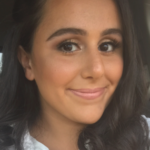
As I stood at the threshold of the Temple Mount, I internally said the Shehecheyanu— the Blessing of Praise. Even though I was only able to mutter my prayers, I knew that because of the complicated history of this holy site, and the continued discrimination that Jews face there, my ancestors could have never pictured their offspring being able to recite a Jewish blessing at Judaism’s holiest site. Yet there I was, living my ancestors’ wildest dream. But for others, my dream was their worst nightmare.
In 1967, after Jordan’s illegal occupation of part of Jerusalem, Israel gained complete sovereignty over the holy city. But in an effort to appease its neighbors, Israel designated authority over the Temple Mount to the Islamic Waqf of Jordan. The Waqf then established a set of rules to maintain the “status quo” at the site, which created a hostile environment banning the Jews’ basic right to freedom of religion.
The Waqf implemented a system of forced separation, whereby religious Muslims are treated as first-class citizens, and everyone else as second- and third-class citizens. Non-Muslims are not allowed to pray at the Temple Mount and the Waqf removes people for simply moving their lips or bowing their head. Furthermore, Jewish and Christian prayer books are banned from the site. In order for Jews to truly visit their holiest site, they must pretend that they are not Jewish.
When I visited the site this winter with a group of Jewish and Christian friends, we took extra precautions to ensure a safe visit. All the females in the group covered their knees, elbows, and collarbones. Yet the Waqf still gave us scarves to wrap around our already covered bodies. Out of fear, we were careful that our actions on the site itself did not resemble prayer. I was even advised by our guide to remove my necklace, because the Star of David that hung around my neck is viewed as offensive and triggering. A sign of my faith is offensive and triggering.
In addition to their prejudicial rules, there has been a long, well-documented history of the Waqf trying to erase the Jewish connection to the site. In the 1970s, the Waqf illegally dug a trench for utility lines without archaeological supervision. This exposed a 16-foot-long, six-foot-thick wall believed to have been part of the Herodian Temple complex. After discovering this, the wall was dismantled and covered up. The Waqf continues to dig at the site with no regard for the Jewish artifacts that they are harming in the process. In 2007, the Waqf began to dig a deep trench for maintenance purposes without archaeological supervision, damaging structures from the First and Second Temples.
On Friday, April 6, it was reported that Jordan filed an official complaint with the Foreign Ministry of Israel due to an Israeli court’s ruling that granted Jews the ability to pray by the entrance of the Temple Mount. With the Islamic Waqf and Jordan’s track record, it’s a no-brainer that they would file a complaint about Jews praying outside of the perimeter of the plaza. The Wafq tries to control every aspect of non-Muslim activities at the Temple Mount. They even dictate when others can visit. They forbid Jews from praying at the Temple Mount in hopes of breaking their spirit. The Wafq has done everything in their power to discredit the Jewish connection to this site, going as far as damaging artifacts. But their attempt to prohibit Jewish prayer outside of the site is a new low — even for the Waqf.
So as I stood at the threshold of the Temple Mount, I was filled with an array of bittersweet emotions. I felt that I had gone through a time machine and was taken back to when my grandparents, great-grandparents, and all my ancestors felt the need to hide their Jewish identity. The Waqf labeled me a trespasser, and that rejection left me feeling powerless and humiliated. However, unlike my ancestors, I was not in Syria or Spain. I was privileged enough to be in front of the holiest site in all of Judaism in the Jewish State of Israel, even though it was under segregated conditions. My connection to the land was not broken, but strengthened.
I gathered up all those feelings and projected it into a powerful prayer: “Blessed are You, Lord our God, King of the Universe, who has granted us life, sustained us, and enabled us to reach this occasion.”
This article was originally published in The Algemeiner on April 16th, 2018.
Contributed by CUNY CAMERA Fellow Natalie Segev.

